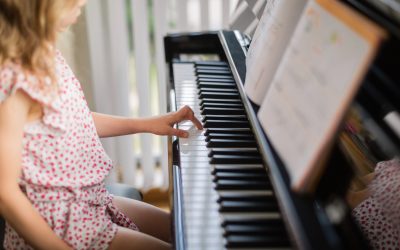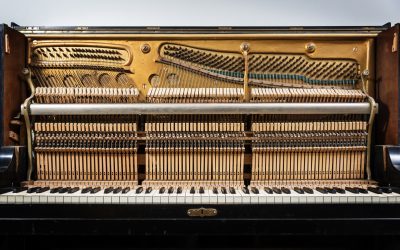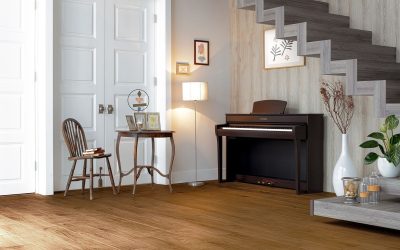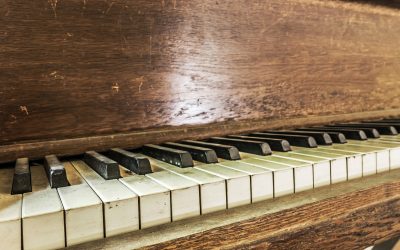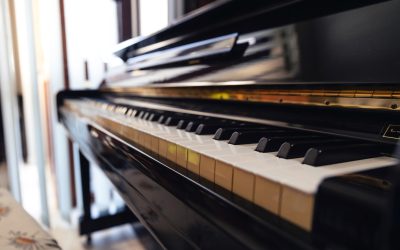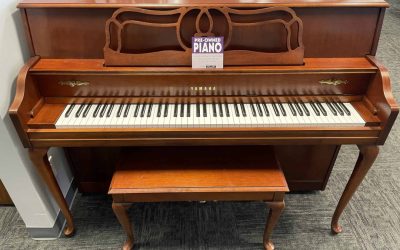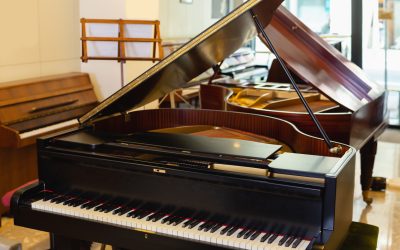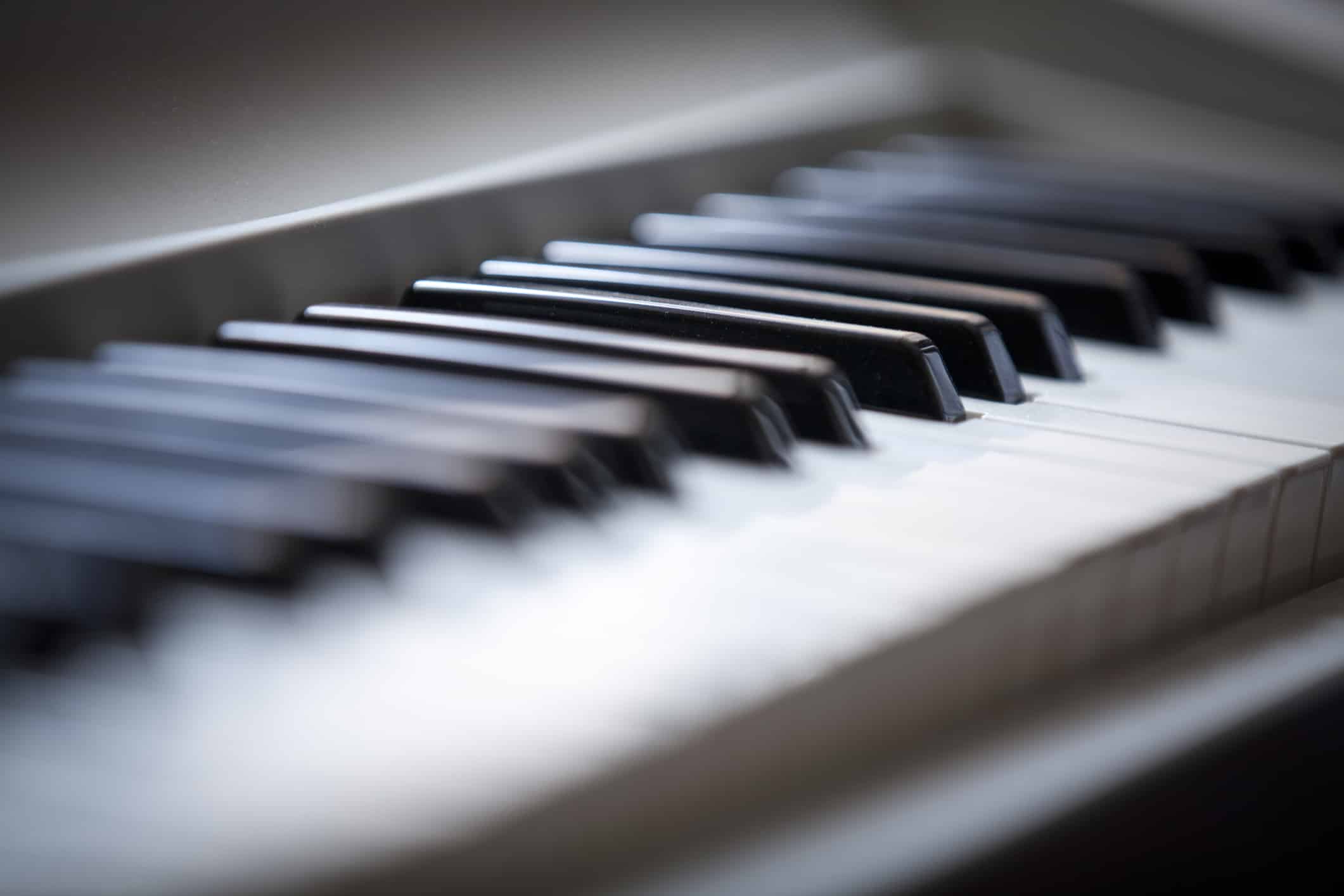
While Yamaha Clavinova digital pianos require less maintenance than digital pianos as they don’t require annual tuning, regular cleaning and maintenance can help extend the life and performance of a Clavinova.
In this step-by-step guide, we walk you through the process of cleaning and maintaining your Yamaha Clavinova.
How Often Should I Clean My Clavinova?
In general, Clavinova pianos should be lightly cleaned once or twice a month to remove debris and can benefit from a deeper cleaning annually. Clavinova pianos that are more frequently used, especially in homes with younger children that may introduce sticky residue to keys, or Clavinovas that are more frequently exposed to pet hair, dust, or debris may require more regular cleaning to maintain lifespan and performance.
Step-by-Step Clavinova Cleaning Guide
The following are the steps for deep cleaning your Yamaha Clavinova.
Step 1: Gather Your Supplies
Before you begin, gather the necessary cleaning supplies:
- New, clean & unwashed, lint-free microfiber cloths (once washed, these cloths can become rougher and can scratch the piano’s surface, so it is best to use a new, unwashed cloth whenever possible).
- Distilled water
- A small dish or container
- Cotton swabs
- A can of compressed air (optional)
- Yamaha-approved piano polish (optional)
Step 2: Power Off and Unplug the Piano
Ensure your Clavinova is powered off and unplugged to prevent accidents during the cleaning process.
Step 3: Dust the Piano Surface
Start by dusting the piano’s surface and keys. Use a dry or lightly dampened microfiber cloth to gently remove dust and debris from the keys and other surfaces. Be thorough but gentle to avoid scratching the keys or damaging any electronic components. If you have a compressed air can, you can use it to blow away dust from hard-to-reach areas.
Step 4: Clean the Piano Keys
To clean the keys, lightly dampen a microfiber cloth with distilled water. Wring out as much excess water as possible to avoid moisture seeping between the keys. Gently wipe the keys, starting from the back and moving towards the front.
Step 5: Clean the Cabinet
For cleaning the cabinet, use a separate dampened microfiber cloth. You may also use Yamaha-approved piano polish. Apply a small amount of cleaner to the cloth if using, then wipe the piano’s surface following the wood grain or finish direction.
Step 6: Clean Control Panels
Use Q-tips or cotton swabs to clean control panel buttons and switches. Dampen lightly with distilled water if necessary. Ensure they are completely dry before plugging the piano back in.
Final Thoughts
To maintain your Clavinova’s condition, dust and wipe down the piano regularly and consider using a cover when it’s not in use to protect it from dust and potential damage. /;,.b By following these steps and practicing regular maintenance, you can keep your Yamaha Clavinova digital piano in pristine condition for years to come, ensuring it continues to provide beautiful music and joy in your home.
You may also be interested in...
Encouraging Yourself to Play Piano More as an Adult
Playing the piano is rewarding, not only for the relaxation it provides, but also for the sense of accomplishment, confidence, and stress release if offers. However, for many adults, it can feel frivolous to take the time to play the piano. With so many other...
How to Keep Your Child Motivated to Practice the Piano
You picked the perfect piano, hired a highly-rated piano teacher, and bought your child a stack of books to learn how to play the piano—but one thing’s missing: their motivation to practice. Even if a child is super excited to learn to play the piano, there are some...
Top Health Benefits of Playing the Piano
There are many reasons people choose to play the piano—for pleasure, skill development, stress relief, and more. In this article, we explore the health and wellness benefits of playing the piano. How Playing the Piano Supports Health & Wellness Playing the piano...
Upright vs. Grand Pianos: Differences & Benefits
The choice between an upright or grand piano usually comes down to size, price, aesthetic, or all three. However, for those piano buyers who have wiggle room (literally and figuratively) in choosing a piano, the conversation about the difference between an upright and...
Yamaha U Series Upright Pianos
Yamaha is a world-renowned name in pianos because of their quality, reliability, and beauty. With a rich history of piano craftsmanship beginning in 1887, the heritage of Yamaha has made it one of the most respected names in the industry. About Yamaha’s U Series...
Yamaha Clavinova Digital Pianos: A Complete Guide
The Yamaha Clavinova is a world-renowned digital piano manufactured to emulate the touch, feel, and expression of an acoustic grand piano while offering a wide range of additional features, technology, and capabilities. In this article, we answer some of the most...
Ideas for Planning an Engaging Piano Recital
Piano recitals, especially for younger students, often have a reputation of being a little blasé. However, with the right preparation and innovation, a piano recital can be a captivating, elevated experience for its attendees. 10 Tips for a More Engaging Piano Recital...
Understanding the Difference Between a Keyboard and a Digital Piano
If you're new to the world of music or considering an upgrade from your current instrument, you might be wondering about the differences between a keyboard and a digital piano. While both instruments share similarities, they also have distinct characteristics that...
How Digital Pianos Can Enhance Music Education
For new or experienced piano students, a digital piano can be an exceptional tool for enhancing music education. This is especially true for new or young piano students. In our blog “Best Pianos for Beginners,” we further discuss this fact as we discuss our choice of...
About Free Pianos: What to Know Before Accepting a Free Piano
If you are in the market for a pre-owned piano, you may have seen many classified ads for pianos people are giving away for free. But why are there so many free pianos and should you be wary of accepting a free piano from a friend, family member, or neighbor? Why Are...
Is Having a Piano in the Home Good for Kids?
We already know that there are several benefits to kids for learning to play the piano, but what about just having a piano in the home? For children who are still too young to play the piano or for those who have chosen to pursue other passions, there are still...
How to Encourage Piano Playing in Your Home
Every once in a while we encounter someone who would love to buy a new piano for their home–but is worried it won’t get played often enough to make the purchase worth it. In this article, we discuss some of our favorite tips for encouraging piano playing in your home....
How to Spot a Quality Piano: A Beginner’s Guide
If you’re looking to buy a piano, whether new or used, you may be wondering how to ensure your purchase is of good quality. After all, purchasing a piano can be a significant investment, depending on whether you’re purchasing a beginner piano or an advanced piano, and...
Used Yamaha Pianos: What to Know
Used Yamaha pianos are among the fastest-selling brands of used pianos. Because of their material and manufacturing quality as well as global brand recognition, Yamaha pianos are preferred by individuals looking for a used piano they can rely on. Yamaha Pianos Their...
Why Buy a Used Piano?
If you’re interested in purchasing a new piano, you may be considering the benefits of a used piano compared to a new piano. Used pianos can be a tricky purchase if you don’t know what you’re looking for, especially if you’re buying from a private party that may not...

